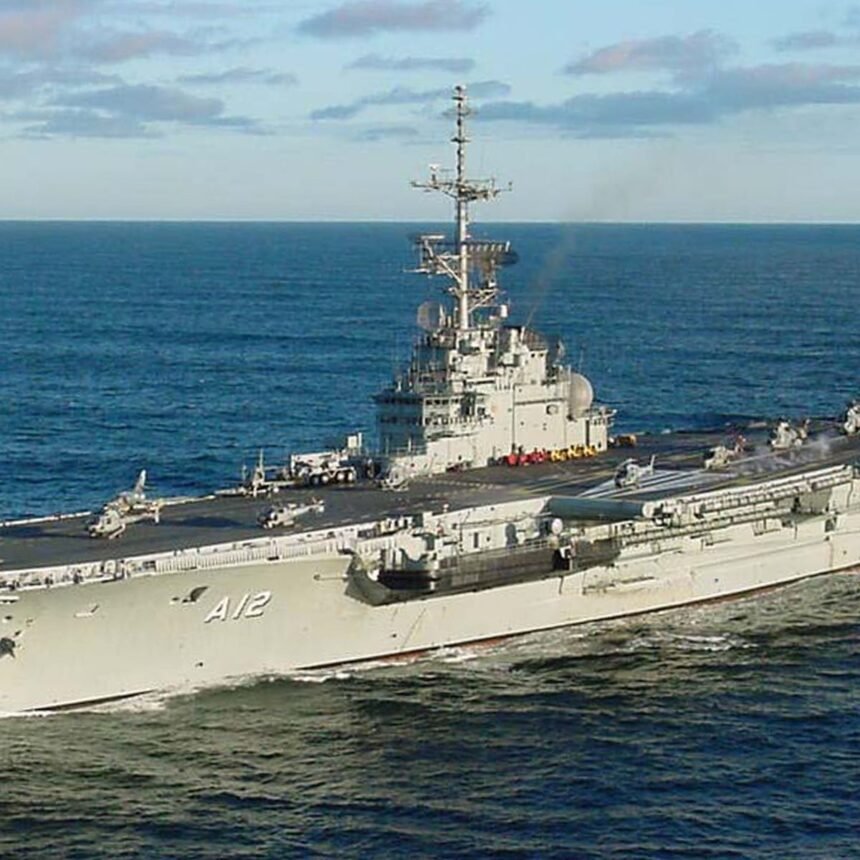Brazil has sunk a decommissioned aircraft carrier in the Atlantic Ocean despite enterprises expressed by environmental groups that the geriatric warship was packed with poisonous accoutrements. The “planned and controlled sinking passed late in the autumn” on Friday, some 350 km (220 long hauls) off the Brazilian seacoast in the Atlantic Ocean, in an area with an “approximate depth of 5,000 measures”, Brazil’s Navy said in a statement.
The cortege said in a statement that the operation to sink the São Paulo, a Clemenceau- class carrier, was carried out with the necessary specialized capabilities and safety measures “in order to avoid logistical, functional, environmental and profitable losses to the Brazilian state”. The decision to scuttle the six- decade-old Sao Paulo, which had been blazoned Thursday, came after Brazilian authorities had tried in vain to find a harborage willing to drink it. Though defense officers said they would sink the vessel in the “safest area,” environmentalists attacked the decision, saying the aircraft carrier contains tons of asbestos, heavy essence and other poisonous accoutrements that could strain into the water and contaminate the marine food chain. The Basel Action Network( BAN) had called on Brazilian President Luiz Inacio Lula da Silva– who took office last month covenanting to reverse surging environmental destruction under far-right-president Jair Bolsonaro– to incontinently halt the “dangerous” plan. Despite those assurances, it was a near certainty that not everyone would see it that way.
Shipbreaking Platform, a coalition of nonprofits that advocates for the safe recycling of vessels, said last week that a controlled sinking would “equate to a state- patronized environmental crime”. A fire broke out on board in 2005, accelerating the aging boat’s decline. Last time, Brazil authorized Turkish establishment Sok Denizcilik to strike Sao Paulo for scrap. But in August, just as a tugboat was about to lug it into the Mediterranean Sea, Turkish environmental authorities blocked the plan. Brazil also brought the aircraft carrier back, but didn’t allow it into harborage, citing the “high threat” to the terrain.










